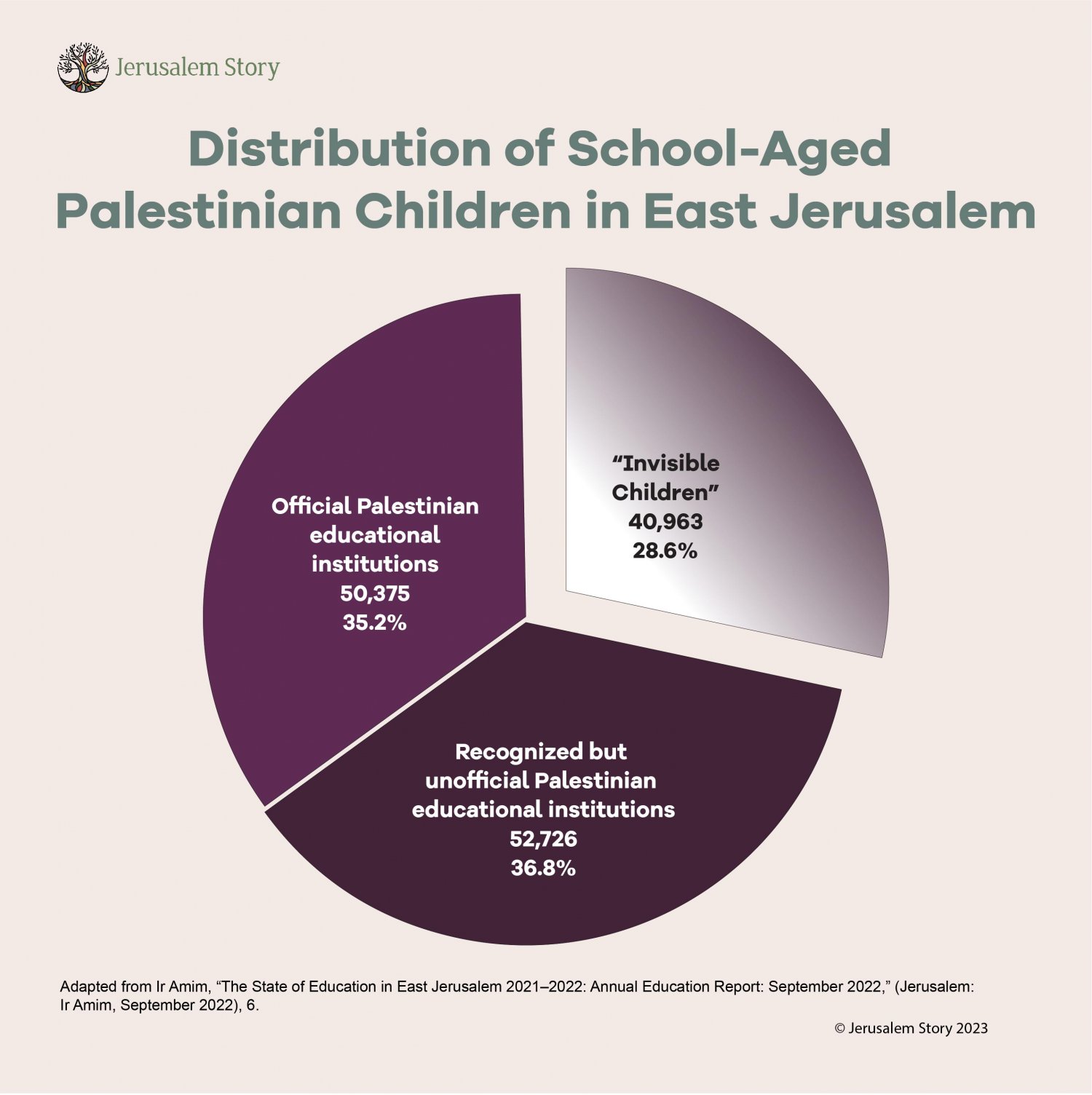According to data provided to Ir Amim by the Jerusalem Education Authority in July 2022, Arab schools make up 36.2 percent of all schools in the city.1
Palestinian children of school age in East Jerusalem attend different types of schools. Some are run by the Manhi, the Jerusalem Education Authority which is a body coadministered by the Ministry of Education and the Jerusalem Municipality. These are considered “recognized and official” schools and they are the only schools the government runs in the city.
Some are awqaf schools, run by the waqf authorities in Jerusalem in collaboration with the Palestinian Ministry of Education outside the city (which is prohibited from operating in the city); these are administered by the Palestinian Jerusalem Directorate of Education.
Some are UN schools run by the United Nations Relief and Works Agency for Palestine Refugees (UNRWA). The municipality considers both the awqaf and the UNRWA schools to be unrecognized and unofficial and does not work or communicate with them.
Finally, some schools are private, run by churches or private NGOs. The municipality divides these into two groups: “The schools that abide by its rules are granted subsidies and are considered recognized but unofficial, whereas private schools that refuse to work with the municipality and abide by its rules are considered unrecognized and unofficial.”2
Outside of all the schools, as shown here, a third of children are “invisible” to the system—that is, they are not known to be registered in any school, despite the fact that education is free and compulsory for all school-aged children in Israel under the Israeli Compulsory Education Law 1949.

